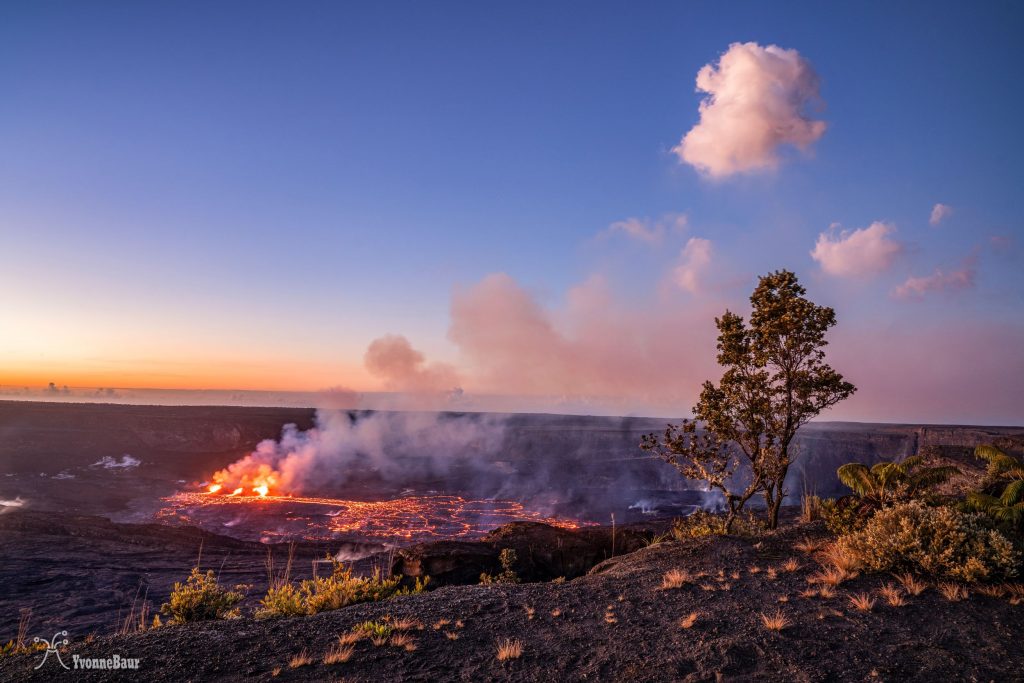Kīlauea eruption drew visitors to Hawaiʻi Volcanoes National Park during usually slow time
Every time Tūtū Pele awakens, residents and tourists flock to Hawai‘i Volcanoes National Park to see the lava show at Kīlauea.

The latest eruption, although it lasted less than a week, came at a good time, in mid-September, when visitation is seasonally down at the park before the winter holidays — and when the state’s tourism industry was suffering because of a mass exodus of tourists from Maui following the deadly Aug. 8 wildfires.
“As soon as the eruption began, visitors arrived to behold the latest activity,” park spokesperson Jessica Ferracane said. “Many people follow the [U.S. Geological Survey] webcams and were closely following the summit data and imagery, knowing that it could happen. Pele was giving us signs for several weeks through increased seismicity at the summit that she was on the move.”
Ferracane said data from the entrance station shows that at least 5,000 visitors — and likely sometimes more — came each day of the eruption to see the volcanic activity. The numbers include Big Island residents. (The park does not differentiate between tourists and residents in its visitor statistics.)
That’s more than the average daily visitation for all of last year. The park saw 1.6 million visitors in 2022, or an average of about 4,331 people a day.
The latest eruption began Sept. 10, with lava spewing from six vents within Halemaʻumaʻu and an area known as the downdropped block at Kīlauea’s summit.
One day later, Steven Apsley, a U.S. Army captain who works for Defense Coordinating Element-Pacific, and his girlfriend Savannah Timmer caught the last flight from Honolulu to the Big Island to see the eruption.
He has been working on the wildfire response on Maui and couldn’t afford to take a full day off, so the couple decided to take an overnight trip.
“I know that eruptions can end as quickly as they start, so I try to see them as frequently as I can,” Apsley said. “I [know] how incredibly lucky I am to live in Hawai‘i and have the privilege to see something so spectacular, so I never want to waste any opportunities. It’s an amazing natural phenomenon that most people never get to see so vividly.”

They arrived at the park at about 10 p.m., just as much of the crowd was leaving. They spent the night at the park on a night that began a little cloudy and rainy but cleared up. He said some of the best views were between midnight and 3 a.m.
“Watching the eruption is like nothing else I’ve ever seen,” Apsley said. “You can hear and feel the raw power of the magma coming from the Earth and you can see the intensity of the magma as it splatters in the caldera.”
He also knows the cultural and spiritual significance of the Big Island’s volcanoes.
“For many Hawaiians, the lava is the physical embodiment of Pele, the elemental force of the eruption,” Ferracane said. “You see her .. breath, in the plume of gas and steam drifting upward. You hear her voice and see her glow. I cannot think of anything more astounding to witness.”
A Sept. 13 Facebook post from the park called the level of nighttime visitation alone was “sudden and near record-breaking.”
“When an eruption is in the summit of Kīlauea, it is a short walk from parking areas so almost anyone can share the experience,” Ferracane said.
Most were respectful and safe while visiting during the eruption. As of Sept. 13, just six people had been cited and several others verbally warned by National Park Service law enforcement for entering a closed area of the park.
The eruption, the fifth since 2020, ended on Sept. 16, making it the shortest recorded eruption of the volcano since 1982.
Yvonne Bauer, an associate at the Hawai‘i Pacific Parks Association bookstore inside the park and lives just 35 to 40 minutes away in ʻĀinaloa, goes the park every day for work and on her free time, eruption or not. But she said she definitely enjoyed this “nice bonus” while it lasted.
She went to the crater rim every morning during the recent eruption to sit in a quiet spot and admire the views and hear the sounds.
“I wanted to be there every day and see the progression and changes each day,” Bauer said. “I always feel relaxed, at peace and extremely grateful that Pele allows me to see the eruption and her creations. I feel very connected to what I see, and sometimes at night, when I hear the roar and the sloshing of the lava lake back and forth, it gives me chicken skin.”












